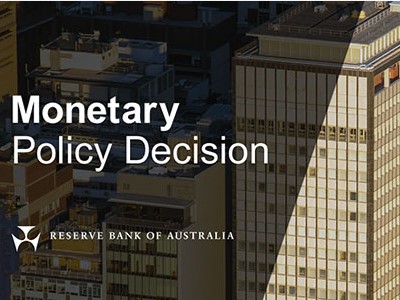
今天澳联储会议上,RBA决定将现金利率目标提高 25 个基点至 3.10%。 同时将外汇结算余额的利率提高了25 个基点,达到 3.00%。
澳大利亚的通货膨胀率仍然太高,截至 10 月的年通胀率为 6.9%。 这种高通胀在很大程度上可解释为全球因素,但相对于经济满足需求的能力而言,强劲的国内需求也在发挥作用。 将通胀恢复到目标水平需要供需之间实现更可持续的平衡。
未来几个月通货膨胀率可能还将进一步上升,预计到第四季度末年通货膨胀率将达到 8% 左右的峰值。 之后由于全球供应方面问题的持续解决、近期一些大宗商品价格的下跌以及需求增长放缓,预计明年通胀将下降。 中期通胀预期仍然很好地锚定,这种状况的保持很重要。 澳洲央行的中心预测是,未来几年 CPI 通胀率将下降,到 2024 年降至略高于 3%。
澳大利亚经济继续稳步增长。 随着全球经济放缓、服务支出反弹结束以及家庭消费增长因金融环境收紧而放缓,预计未来几年经济增长将放缓。 澳洲央行的中心预测是 2023 和 2024 年的增长率约为 1.5%。
劳动力市场仍然非常紧张,许多公司都难以招到雇员。 10 月份失业率降至 3.4%,为 1974 年以来的最低水平。职位空缺和招聘广告都处于非常高的水平,尽管最近有所下降。 随着劳动力市场的闲置产能被吸收,就业增长也有所放缓。 工资增长从近年来的低水平继续回升,并且由于劳动力市场紧张和通胀上升,预计会进一步回升。 鉴于要避免价格-工资螺旋上升的重要性,RBA将继续密切关注未来一段时间内劳动力成本和企业的定价行为的演变。
自 5 月以来,利率累计大幅上升。 这对于确保目前的高通胀只是暂时的是必要的。 高通胀损害我们的经济,使人们的生活更加困难。RBA的首要任务是重新建立低通胀,并随着时间的推移将通胀恢复到 2-3% 的范围内。
董事会认识到货币政策的运作存在滞后性,利率上升的全部影响尚未在抵押贷款支付中体现出来。预计未来一段时间家庭支出将放缓,尽管这种放缓的时间和程度尚不确定。 另一个不确定性来源是全球经济前景恶化。 在恢复通货膨胀率到目标水平的过程中,RBA千方百计努力使经济龙骨保持平稳,但这些不确定性意味着存在一系列潜在变数。 同时实现所需的通胀下降和经济软着陆的道路仍然很狭窄。
RBA预计在未来一段时间内还会进一步提高利率,但这并不是说预先设定加息路线来进行。 我们正在密切注视全球经济、家庭支出以及工资和价格设定行为。 未来加息的幅度和时间将继续取决于即将公布的数据以及RBA对通胀前景和劳动力市场的评估。 RBA仍然有坚定的决心将通货膨胀率恢复到目标水平,并采取必要的措施来实现这一目的。

解读:
- 通胀原因:(1)全球因素 (2)国内的需求力仍强劲,经济能力不能满足需求
- 通胀预期:今年年底达到8%的峰值,然后开始降低,直到2024年回落为3%
- 加息带来的影响:(1)存在滞后性,还没有在房贷支付中全部体现出来 (2)家庭支出将放缓 (3)全球经济前景恶化
- 未来加息考虑的因素:(1)全球经济 (2)家庭支出 (3)工资增长情况 (5)企业价格设定行为
At its meeting today, the Board decided to increase the cash rate target by 25 basis points to 3.10 per cent. It also increased the interest rate on Exchange Settlement balances by 25 basis points to 3.00 per cent.
Inflation in Australia is too high, at 6.9 per cent over the year to October. Global factors explain much of this high inflation, but strong domestic demand relative to the ability of the economy to meet that demand is also playing a role. Returning inflation to target requires a more sustainable balance between demand and supply.
A further increase in inflation is expected over the months ahead, with inflation forecast to peak at around 8 per cent over the year to the December quarter. Inflation is then expected to decline next year due to the ongoing resolution of global supply-side problems, recent declines in some commodity prices and slower growth in demand. Medium-term inflation expectations remain well anchored, and it is important that this remains the case. The Bank’s central forecast is for CPI inflation to decline over the next couple of years to be a little above 3 per cent over 2024.
The Australian economy is continuing to grow solidly. Economic growth is expected to moderate over the year ahead as the global economy slows, the bounce-back in spending on services runs its course, and growth in household consumption slows due to tighter financial conditions. The Bank’s central forecast is for growth of around 1½ per cent in 2023 and 2024.
The labour market remains very tight, with many firms having difficulty hiring workers. The unemployment rate declined to 3.4 per cent in October, the lowest rate since 1974. Job vacancies and job ads are both at very high levels, although they have declined a little recently. Employment growth has also slowed as spare capacity in the labour market is absorbed. Wages growth is continuing to pick up from the low rates of recent years and a further pick-up is expected due to the tight labour market and higher inflation. Given the importance of avoiding a prices-wages spiral, the Board will continue to pay close attention to both the evolution of labour costs and the price-setting behaviour of firms in the period ahead.
There has been a substantial cumulative increase in interest rates since May. This has been necessary to ensure that the current period of high inflation is only temporary. High inflation damages our economy and makes life more difficult for people. The Board’s priority is to re-establish low inflation and return inflation to the 2–3 per cent range over time.
The Board recognises that monetary policy operates with a lag and that the full effect of the increase in interest rates is yet to be felt in mortgage payments. Household spending is expected to slow over the period ahead although the timing and extent of this slowdown is uncertain. Another source of uncertainty is the outlook for the global economy, which has deteriorated. The Board is seeking to keep the economy on an even keel as it returns inflation to target, but these uncertainties mean that there are a range of potential scenarios. The path to achieving the needed decline in inflation and achieving a soft landing for the economy remains a narrow one.
The Board expects to increase interest rates further over the period ahead, but it is not on a pre-set course. It is closely monitoring the global economy, household spending and wage and price-setting behaviour. The size and timing of future interest rate increases will continue to be determined by the incoming data and the Board’s assessment of the outlook for inflation and the labour market. The Board remains resolute in its determination to return inflation to target and will do what is necessary to achieve that.

